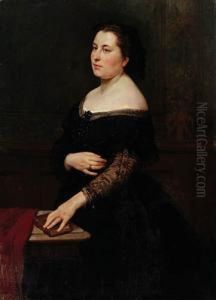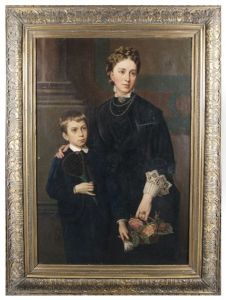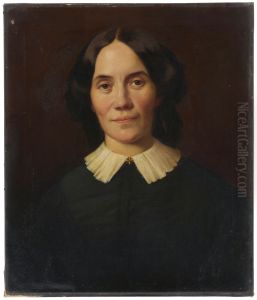Marie Wiegmann Paintings
Marie Wiegmann, born Marie Hancke on September 7, 1826, in Breslau, Silesia (now Wrocław, Poland), was a notable German painter specializing in portraits and historical subjects. Her artistic journey began under the tutelage of her father, who was a painter himself, providing her with a foundational understanding of the arts from a young age. The early encouragement and exposure to the arts were pivotal in shaping her future career. As she progressed, Wiegmann sought to hone her skills and further her education in the arts, leading her to study under various prominent artists of her time.
In 1851, Marie married Rudolf Wiegmann, an architect and art historian, after moving to Düsseldorf. This move was significant, as the Düsseldorf Art Academy was a central hub for artists in the 19th century, offering a vibrant artistic community and a supportive environment for her to flourish. Although women were not formally allowed to enroll in the academy until much later, Marie benefitted from the intellectual and artistic climate of the city, networking with other artists and continuing to develop her skills through private tuition and self-study.
Marie Wiegmann's work received recognition and was exhibited in various prestigious galleries, including those in Berlin, Dresden, and Munich. She was known for her ability to capture the essence of her subjects, imbuing her portraits with a sense of realism and emotional depth that was highly appreciated by her contemporaries. Her historical paintings were also commended for their accuracy and attention to detail, reflecting her deep interest in history and her meticulous research into historical subjects.
Despite the challenges faced by women in the art world during the 19th century, Marie Wiegmann carved out a successful career for herself. Her legacy is a testament to her talent, determination, and the subtle yet impactful ways she contributed to the art scene of her time. Marie Wiegmann passed away on June 28, 1893, in Düsseldorf, leaving behind a body of work that continues to be studied and admired by art historians and enthusiasts alike. Her contributions to German art, particularly in the realm of portraiture and historical painting, secure her place among the notable female artists of the 19th century.


